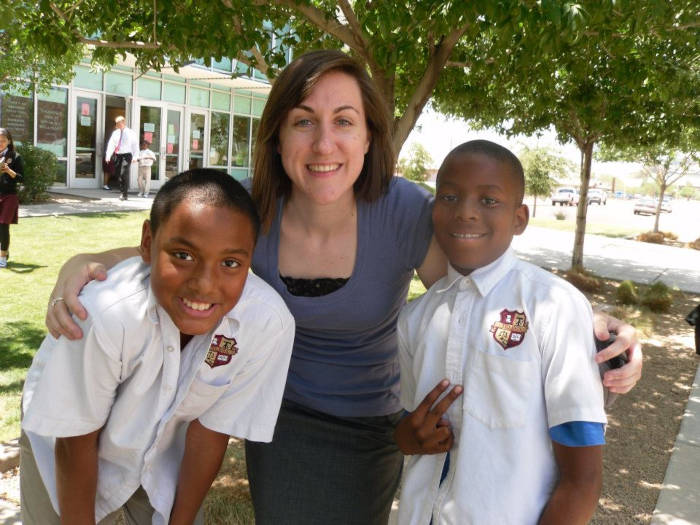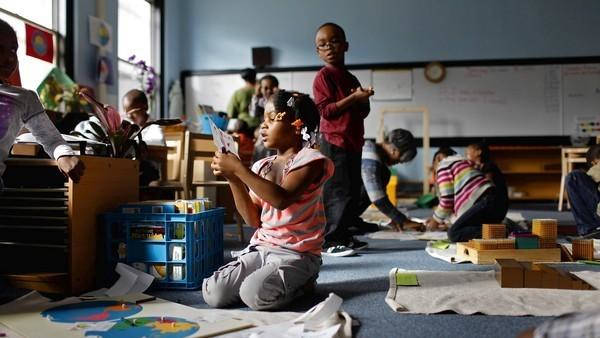DATE
July 15, 2025
AUTHOR
Claire Miller
CATEGORIES
Restorative Practices
SHARE

As a teacher, I always heard Restorative Practices defined as the repair of a relationship when harm is done between two people. Often integrated into a low-income urban school context, this definition typically applies when a student has harmed someone else by their words or actions. This definition leads to a series of peace circles, restorative conversations, and reflection activities, all with a focus on repairing relationships between people.
While I have seen the powerful impact of these strategies in specific spaces dedicated to this work and believe they are valuable, I question our collective belief that these strategies should be the sole focus of Restorative Practices in schools.
I question this definition and implementation of Restorative Practices in our schools for one reason: the faulty assumptions wrapped up in this definition of Restorative Practices. First, this definition assumes there is a relationship there worth restoring within the school context. I have sat through far too many performative peace circles in cramped closets-turned-offices to believe that this should be the first strategy used in conflict resolution with our students trying to survive complicated urban school systems. And even if there is evidence of a meaningful relationship that can, therefore, be restored, there is another assumption beneath the definition I find even more troubling. The definition of Restorative Practices as the repair of relationship when harm is done implies that the deepest thing that needs to be restored is that present relationship. It assumes there is nothing else broken beneath the conflict. Nothing else destroyed within countless students that, if restored, would mitigate conflict before it ever started. Nothing else coming after our students everyday, chipping away at something within them long before they ever step into a place of conflict.
I challenge the current definition of Restorative Practices in our schools. There is something much deeper that needs to be acknowledged, reconciled, and restored within our students.
I challenge the current definition of Restorative Practices in our schools.
Over the past ten years in my work as an urban educator and school leader, I have witnessed firsthand the harm done to Black and Latinx students in low-income schools. Some of the verbal and physical violence I have seen unfold in hallways, classrooms, and lunch rooms haunt me to this day. Running down the hallway to bear the brunt of an administrator’s verbal wrath before her words struck a teenager, escorting a teacher out of the building after I witnessed his demeaning tone bring kindergartners to tears, and feeling the hair on my neck stand up as a security guard’s baton struck lockers with a deafening clang at the sound of a middle school tardy bell: these are just a few of the moments that keep me up at night. These moments happen every day in urban schools all over this country, and they wreak havoc on something deep in our students.
...there is a toxicity coursing through classrooms...
And while this terrorism on children just trying to get an education needs to be addressed as the criminal behavior it is, there is also a toxicity coursing through our classrooms that is much more subtle. Sneaky even. The moments seem benign: a well intentioned teacher lectures students for 30 minutes while giving multiple prompts for students to stay silent and listen, a class of students sits quietly completing packets of work for days on end, a teacher laughs along with students when they mock irrelevant curriculum, a teacher calmly says ‘quiet down’ more than anything else in a day’s lesson. But these moments only seem benign until you look closer. These moments, wrapped in deeply internalized bias, compound in one clear message to students: you are meant to be kept silent and under control.
This manifestation of bias is not unique to teachers, very few of whom ever set out to intentionally hold students back. Teachers enter the profession to help students-not hurt them- which begs the question of why these subtle instances of unintentional harm are so prevalent in our classrooms.
Our society has this message of control woven into its very fabric. It is the subtle smog of racism and classism that we all breathe so deeply each day; it only makes tragic yet logical sense that it rears its ugly head in the urban education system. With this ethos all around us, well meaning educators are told that the best classroom is the one where the teacher is firmly in command of her students. Armed with this belief, hard working and deeply caring teachers try their best to create a classroom where all of their students are “under control.” Think about it: how many times have you heard someone say, “He is such a great teacher. His classroom is under control”? If you work in a school where most students are low-income students of color, you probably lost count a long time ago.
This ever-present, nicely packaged control over students in our schools points to the deepest damage that needs to be repaired in our students, the real harm that needs to be healed.
We need to restore our students’ sense of academic identity. We need to restore the belief that they are valuable intellectual contributors worthy of respect. We need to restore the knowledge that our students grow when they are in control, not when they are under control. It is time to restore what is really lost. It is time to restore the power of the leaders sitting right in front of us every day.
This is why our organization, Restorative Practices in Action, exists. We bring exceptional educators together to disrupt the toxic message that low-income students should be kept under control. We work to show the world what is possible when students are empowered as brilliant leaders in academic space. And part of that work is to share our stories, our struggles, and our successes with our students.
Our blog will focus on this process of restoration. It will focus on teachers who restore the leadership of their students with their students. It will invite educators to share their unique journeys as they shift the power back to their students in the classroom. It will bring in the voices of educators, community leaders, and students who seek to build a new vision of student leadership with each other.
I hope you join us for the journey and walk alongside us as we all re-envision and restore what is possible with student voice, ownership, and empowerment in the classroom.
We work to show the world what is possible when students are empowered as brilliant leaders in academic space.



